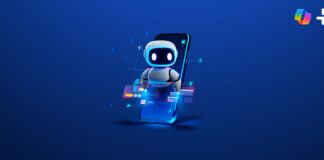Integrating generative Artificial Intelligence has become essential across almost every business function. Its ability to produce creative, personalized, and innovative content helps streamline processes, enhance decision-making, and deliver unique experiences to customers.
By embedding AI into your business applications, you boost employee productivity, efficiency, and creativity—while fostering innovation across all areas of your organization. So, how about we explore some of the capabilities and limitations of generative AI? We’ll also get to some practical applications across different business roles.
What Generative AI is and isn’t
Generative AI differs from traditional AI in several key ways. While traditional AI is trained for specific tasks using targeted datasets, generative AI relies on pre-trained models built on vast amounts of general data. This allows it to perform tasks it hasn’t been explicitly trained for, interact using natural language, and adapt to a wide variety of use cases without needing retraining. In other words, it continuously evolves, learning and improving as it processes more information and content.
Traditional AI vs. Generative AI
Traditional AI:
- Limited to knowledge explicitly included in its predefined model
- Trained using specific datasets for specific tasks
- Requires new, custom models for each application (sometimes using transfer learning)
- Offers minimal user interaction
Generative AI:
- Zero-shot learning: Capable of performing tasks without specific training
- Trained on massive volumes of general data—ChatGPT, for example, is estimated to have trained on around 10% of the internet
- Built on pre-trained models provided by major tech players (OpenAI-Microsoft, Meta, Google, etc.), which are then extended for custom use
- Interacts through natural language via chat-style “prompts”
Generative AI for Finance, Sales, and Service roles
Gen AI is making a profound impact across all business functions, helping teams improve everyday processes. Microsoft Copilot, Microsoft’s AI assistant, boosts productivity, unlocks creativity, enhances decision-making, and empowers employees to work smarter and deliver greater value.
This comprehensive AI platform combines large language models (LLMs) with business data from Microsoft 365 and Microsoft Dynamics 365 applications. Through a natural-language chat interface, users can ask questions and generate content quickly and intuitively.
Copilot for Microsoft 365 integrates directly with Microsoft apps like Word, Excel, PowerPoint, Outlook, and Teams. It leverages your organization’s data to enhance team productivity and communication.
Microsoft Copilot for Sales is an AI assistant built to maximize sales team productivity. It embeds sales intelligence, recommendations, and advanced AI into everyday tools like Outlook, Teams, and Word—eliminating repetitive, time-consuming tasks like switching between apps or manually searching CRM systems. By integrating CRM data and providing tailored suggestions, it helps teams close more deals and improve customer interactions, bringing generative AI benefits into every sales workflow. It also connects with platforms such as Microsoft Dynamics 365 Sales and Salesforce Sales Cloud.
Microsoft Copilot for Service modernizes contact centers with generative AI, increasing agent productivity and improving customer experiences. Built on Microsoft 365 Copilot, it enhances apps like Outlook and Teams by synthesizing vast amounts of CRM and knowledge base data to offer real-time, relevant guidance directly in the agent’s workflow.
Microsoft Copilot for Finance addresses the unique challenges faced by finance teams. Finance professionals play a crucial role in supporting business strategy, maintaining financial health, and ensuring regulatory compliance—all in a fast-evolving environment. Copilot for Finance enables finance teams to focus on strategy and cost reduction by optimizing tasks such as planning, analysis, risk management, and compliance—transforming their role through actionable insights and enhanced collaboration.
How Prodware helps you assess AI readiness
To successfully adopt generative AI, it’s crucial to follow a structured approach. Prodware supports you through every step:
- Understand AI’s capabilities and limitations by exploring use cases
- Build a backlog of relevant AI use cases
- Prioritize and select the most impactful use case
- Evaluate your systems, data, and documentation for readiness
- Prepare your data: clean, secure, and classify it
- Design a technical solution tailored to the chosen use case
- Build, validate, and pilot the solution with a select group of users
- Roll out the solution organization-wide
- Measure outcomes: KPIs, adoption rates, productivity improvements, and more
Generative AI is reshaping the way companies operate. By understanding its strengths and limitations, organizations can fully harness its potential to boost productivity, efficiency, and customer satisfaction. Prodware is here to help you implement the right generative AI solutions for your specific needs—with tailored training, data preparation, and solution deployment.
Adopting generative AI technologies involves challenges and risks. That’s why it’s important to identify what will genuinely benefit your business.
Deploying AI projects? Our team is here to walk you through them every step of the way!






